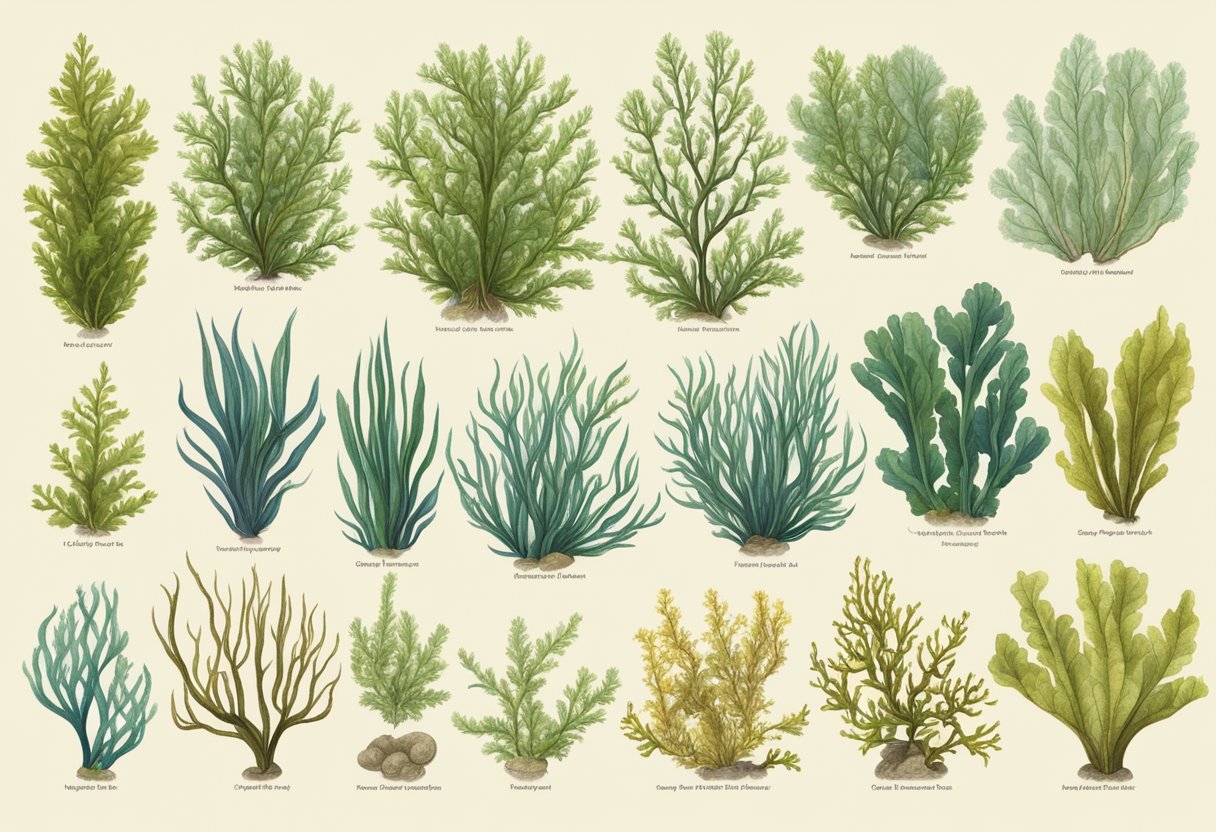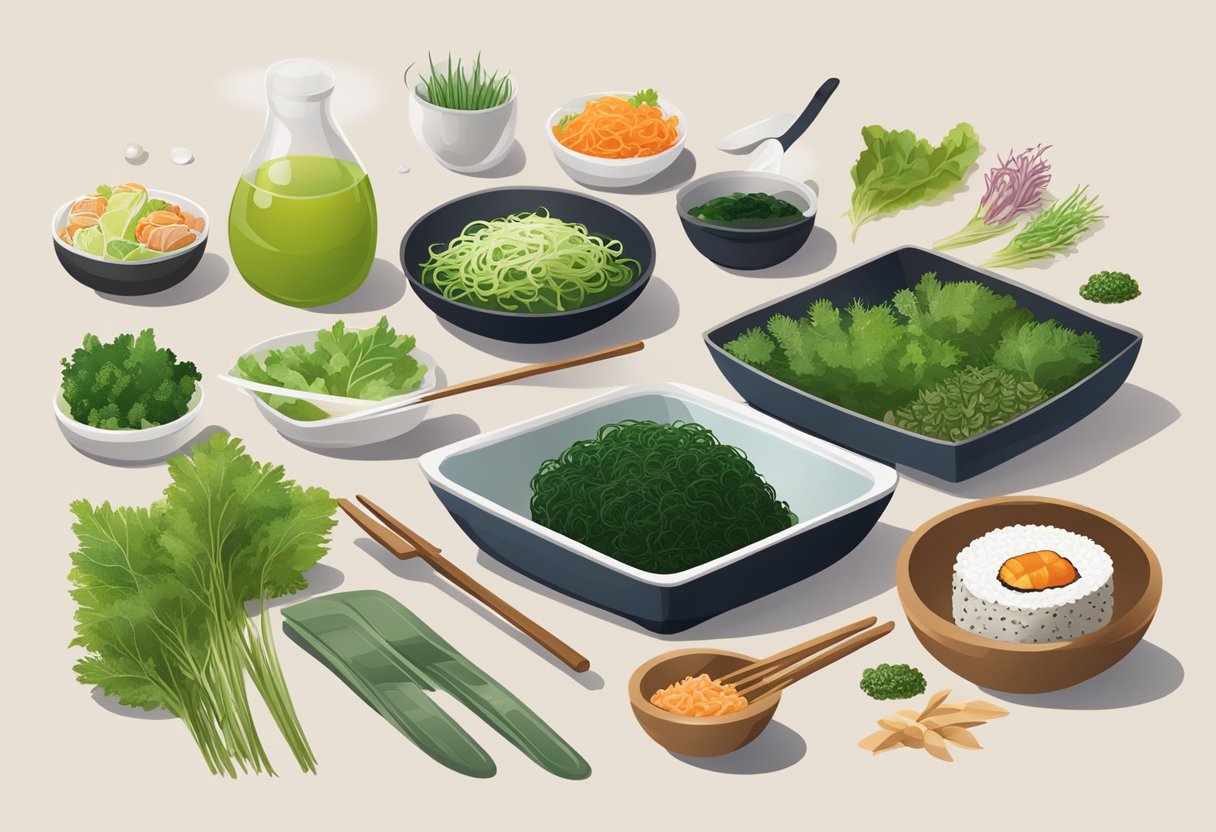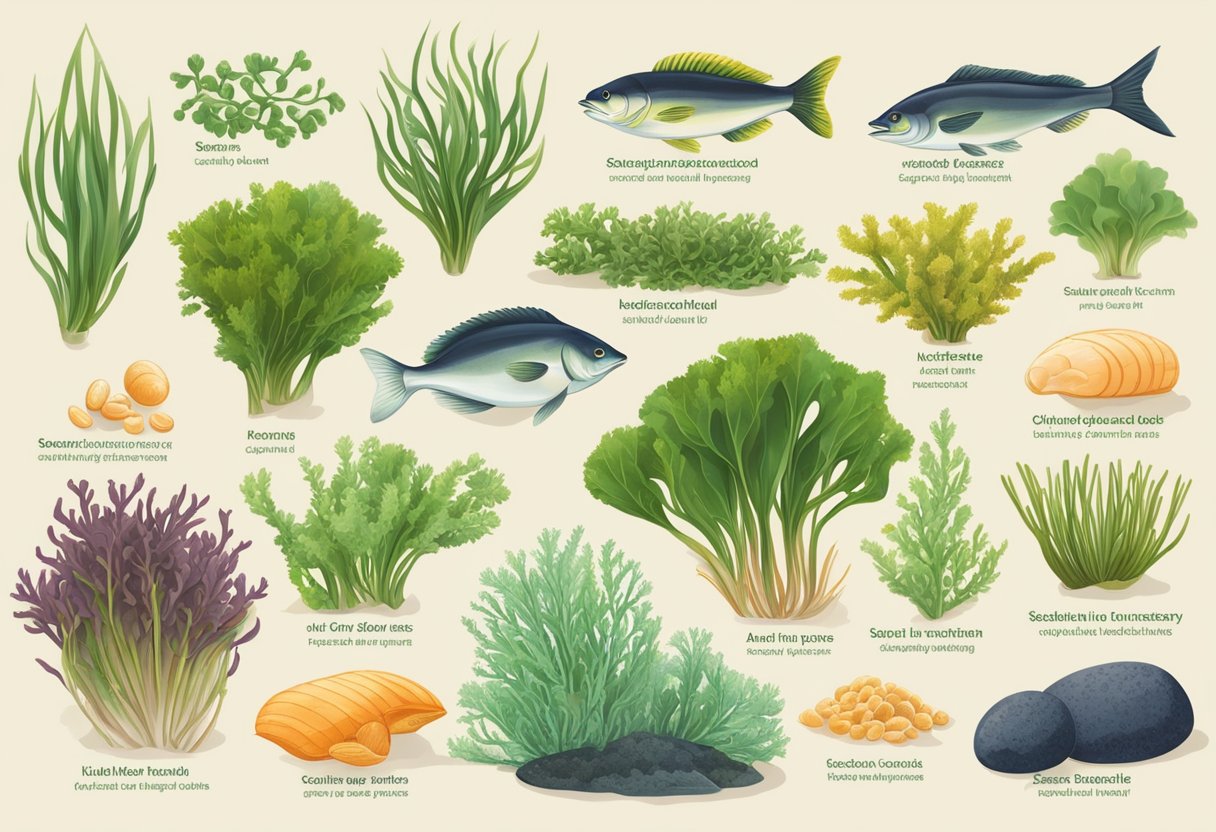Seaweed, a term that encapsulates diverse species of marine algae, is commonly found along rocky shorelines worldwide. Though often overlooked in the context of seafood, it represents a quintessential part of marine life. From red to green to brown varieties, seaweed is not only integral to ocean ecosystems but also to human cuisines and nutrition. It differs from what is traditionally viewed as seafood, such as fish and shellfish, yet it forms a substantial component of diets in many coastal regions.
When it comes to classifying seaweed, it occupies a unique position botanically and culinarily. Unlike fish and shellfish, seaweed is a plant-like organism, yet it is harvested from the sea. The culinary uses of seaweed are extensive and have been valued in many cultures, particularly in East Asian cuisines, for centuries. It is versatile, available in fresh, dried, or powdered forms, and can be used in a multitude of dishes, from soups and salads to snacks and condiments.
The nutritional profile of seaweed is remarkable, earning it a place among superfoods. Rich in vitamins, minerals, and antioxidants, it is lauded for its health benefits, which include aiding digestion and potentially reducing the risk of certain diseases. Despite its marine origin, seaweed is distinguished from fish and crustaceans through its plant-like characteristics, yet it holds an esteemed place within the broader category of foods derived from the sea.

Key Takeaways
- Seaweed is a type of marine algae distinct from traditional seafood but valued in global cuisines.
- Its uses range from culinary ingredients to nutritional supplements, reflecting its versatility.
- Seaweed provides significant health benefits due to its high content of vitamins and minerals.
Seaweed Classification

Seaweed is commonly found in marine environments and plays a vital role in aquatic ecosystems. It is important to understand its classification and how it differs from what is traditionally categorized as seafood.
Seaweed as Marine Algae
Seaweed consists of different species of marine algae that grow in a range of aquatic environments. Marine algae are primarily classified into three categories based on pigment coloration and cellular structure:
- Red algae (Rhodophyta)
- Green algae (Chlorophyta)
- Brown algae (Phaeophyceae)
Each category encompasses a variety of seaweed types. Seaweed is a crucial part of the ocean's biodiversity and provides essential nutrients to marine life.
Differences Between Seaweed and Fish
Seaweed and fish belong to different biological kingdoms. Seaweed is part of the Plantae kingdom under the algae classification, whereas fish are vertebrates from the Animalia kingdom. The primary distinctions are outlined below:
- Structure: Seaweed exhibits a simple, non-complex structure without organs. Fish have complex anatomies with organs and systems.
- Locomotion: Seaweed is generally stationary and attaches to substrates or floats, while fish are mobile and actively swim.
- Respiration: Seaweed utilizes photosynthesis to produce energy, while fish respire by extracting oxygen from water through gills.
Although both are harvested from aquatic environments, the term 'seafood' conventionally refers to edible sea life, primarily fish and shellfish. Seaweed, while also consumed, falls under the marine algae category rather than seafood. However, in culinary terms, seaweed is often included in seafood dishes and cuisines, which creates a common association between the two.
Culinary Uses of Seaweed

Seaweed plays a prominent role in various cuisines and is often grouped with marine-derived food, typically labeled as seafood.
Seaweed in Asian Cuisine
In Asian cuisine, seaweed is integral to the culinary landscape. Nori, a type of seaweed, is essential for sushi preparation in Japan, wrapping rice and fish in delicate, edible sheets. Korean cooking utilizes kelp in soups like Miyeok-guk, consumed traditionally for birthdays and postpartum nourishment. In China, kelp and other seaweeds are often found in salads with a tangy dressing or cooked in hearty stews.
Seaweed as a Food Supplement
Seaweed, rich in iodine, vitamins, and minerals, has transcended culinary boundaries to become a popular food supplement. Spirulina and Chlorella are available in tablet or powdered form and are praised for their high protein content and health benefits, like immune system support. They are easily integrated into diets by stirring into smoothies or sprinkled over meals.
Cooking with Seaweed
Cooking with seaweed offers a range of applications, from broths to seasoning. Dulse, a reddish seaweed, is enjoyed for its unique flavor and can be added to bread dough or used as a seasoning after being dried and ground. Chefs also create seaweed-infused oils or butters to impart a subtle oceanic flavor to dishes. Seaweed salads are a refreshing side dish, usually seasoned with sesame oil, soy sauce, and vinegar.
Nutritional Profile of Seaweed

Seaweed's nutritional value stems from its rich composition of minerals, vitamins, dietary fibers, and proteins, making it a robust addition to the diet.
Minerals and Vitamins in Seaweed
Seaweed is a powerhouse of iodine, crucial for thyroid health, and vitamin K, important for blood clotting. It also offers a good source of minerals such as calcium, magnesium, and iron. The presence of vitamins A, C, E, and B vitamins such as riboflavin and thiamine further enhances its nutritional portfolio.
- Iodine: Essential for healthy thyroid function
- Vitamin K: Aids in blood clotting
- Calcium: Vital for bone health
- Magnesium: Supports muscle and nerve function
- Iron: Key in forming red blood cells
- Vitamin A: Important for vision and immune function
- Vitamin C: Antioxidant that helps tissue repair
- Vitamin E: Protects cells from oxidative stress
- B Vitamins: Support energy metabolism
Dietary Fiber in Seaweed
Seaweed is an excellent source of dietary fiber, particularly soluble fiber. This type of fiber can help to regulate blood sugar levels and lower cholesterol. Seaweed fiber has prebiotic properties, fostering beneficial gut bacteria and contributing to digestive health.
- Soluble Fiber: Benefits blood sugar and cholesterol levels
Protein Content in Seaweed
Although not as high in protein as some other food sources, seaweed does offer a respectable amount of protein, which is notable for its inclusion of all essential amino acids, making it a complete protein. Some seaweed species, like spirulina and chlorella, are particularly high in protein.
- Complete Protein: Contains all essential amino acids
- Spirulina & Chlorella: High-protein seaweed varieties
Seaweed occupies a unique category; it is neither traditionally classified as a vegetable nor as seafood. It is a type of marine algae and is often included in the diet for its dense nutritional benefits.
Frequently Asked Questions

Seaweed has been a topic of both culinary interest and dietary concern for those with seafood allergies. Questions often arise about its classification in food categories and any potential allergenic properties.
Can You Be Allergic to Seaweed if You Have a Seafood Allergy?
Individuals with seafood allergies may react differently to seaweed, as it is not a fish or shellfish, but a form of marine algae. Allergies to seaweed are uncommon, though possible, and are typically not directly associated with fish or crustacean shellfish allergies. A healthcare provider should be consulted for personalized advice.
Is Seaweed Classified as a Type of Seafood?
Seaweed is not classified as seafood in the traditional sense, as seafood typically refers to fish and shellfish. However, seaweed is often included in the broader category of marine-derived food products, which encompasses all edible aquatic life.
What Food Category Does Seaweed Belong To?
Biologically, seaweed is a form of marine algae and fits within the broader food category of vegetables. It can be considered a sea vegetable due to its plant-like properties and nutrient profile, supporting the claim that it may be seen as a vegetable rather than traditional seafood.
What is the Definition of Seafood and Does It Include Seaweed?
The definition of seafood generally encompasses organisms sourced from the sea that are intended for human consumption, including fish, mollusks, and crustaceans. While seaweed does originate from the sea, it is classified scientifically as algae and typically not grouped under the same category as fish or shellfish.




